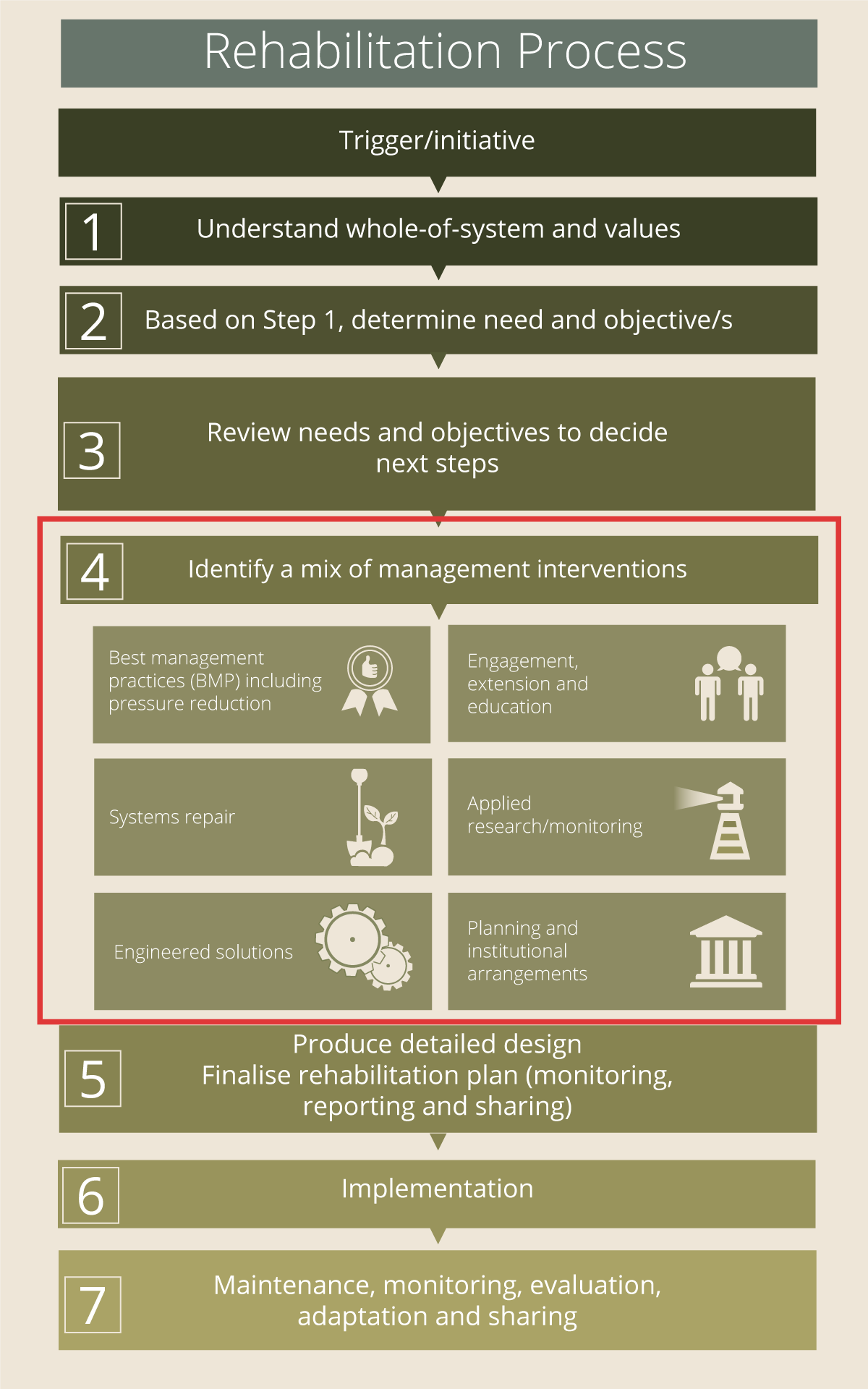|
|
Step 4: Identify a mix of management interventionsAt this point in the process, it should have been established that rehabilitation is required. There should be clear objective/s, the services and values to be maintained or enhanced should have been identified and the beneficiaries and stakeholders should be known. This information can be used to identify a mix of management interventions.
Management interventions to deliver aquatic ecosystem rehabilitation outcomes can be broadly divided into six themes:
Every rehabilitation site will be different but there are general principles that apply to all sites when it comes to the types of intervention used. Engagement, extension and education should be part of all interventions, but the degree will differ with the project. Best management practices should be applied first as these can reduce the need for other types of management intervention. Interventions such as engineered solutions may pose a higher risk or require lengthy lead in time (e.g. planning and institutional arrangements) often making them last resort options if no other solutions are possible. While each of these themes are described separately, in practice there is often overlap and many interventions will require actions from different themes. An engineered solution, such as bank stabilisation, may often be undertaken with systems repair, such as active revegetation. Management interventions may also span more than one theme, for example assisted natural regeneration falls under best management practice and systems repair. In selecting the most appropriate management interventions the available budget and legal requirements will often be the key deciding factor. The ultimate goal is to limit risk (social, financial and environmental) and fix the problem rather than apply a temporary solution. A range of tools and methods are available for assessing and prioritising management interventions and factors to be considered are outlined in the Whole-of-System Values-Based framework. In Great Barrier Reef Catchments, the Gully and Streambank Toolbox can be used to assess erosion potential, sediment loss and prioritise cost effective management interventions. A preliminary list of actions with a timeline and equipment list should be developed, but note that a detailed design is required in step 5. For example, if erosion and sediment is identified as a threat to the values of the aquatic ecosystem then the plan will need to address both short and long-term sediment control. Short-term approaches may include sediment fencing, while long-term activities may involve adding vegetated filter strips and buffer zones or the placement of boulders and logs to aid stabilisation.
Things to think about:
Pages under this sectionLast updated: 28 June 2022 This page should be cited as: Department of Environment, Science and Innovation, Queensland (2022) Step 4: Identify a mix of management interventions, WetlandInfo website, accessed 18 March 2024. Available at: https://wetlandinfo.des.qld.gov.au/wetlands/management/rehabilitation/rehab-process/step-4/ |

 — Department of Environment, Science and Innovation
— Department of Environment, Science and Innovation


